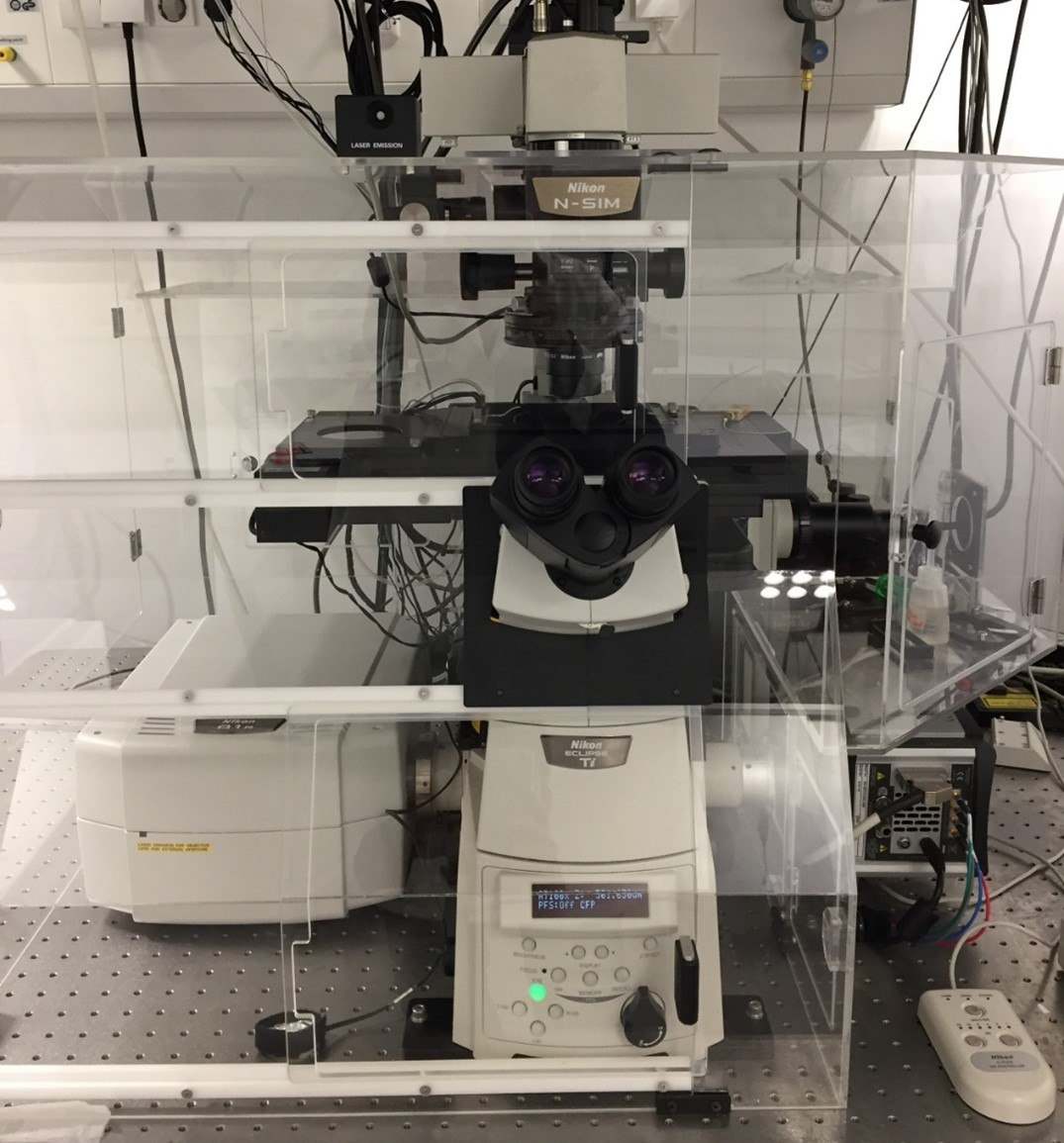Nikon confocal A1R / SIM Scanning confocal
Purpose:
- High resolution 3D confocal sectioning
- Live experiments with Resonant scanner and Denoise.ai function
- Smart acquisition using Nikon NIS.ai
- FRAP
- Structured illumination: 2D SIM / 3D SIM
Microscope stand: Nikon Eclipse Ti, inverted, equipped with full environmental control
Fluorescence excitation:
1. Confocal-CW lasers: 405nm@100 mW ; 457nm ; 477nm ; 488nm@16mW ; 514nm@ 13mW ;561nm@20mW; 640nm@ 40mW
2. SIM-CW lasers: 457nm; 488nm; 515nm; 561nm; 640nm
Confocal detection: 4 channels
Detection devices: 2x conventional PMTs (10-20% quantum efficiency), 2x GaAsP (40% quantum efficiency between 450-600 nm)
SIM detection: 1 channel
Detection device: EM-CCD Andor iXon X3 DU897
Chip size: 512x512 pixels
Pixel size: 16x16 µm
Dynamic range: 14 bit
Maximum frame rate: 35 frames/s (full chip)
Quantum efficiency: > 90% @ 600 nm
Control and acquisition software: Nikon NIS
Additional features:
- XY mechanical stage
- Z piezo stage (+- 100 µm)
- Z drift compensation module Nikon Perfect Focus System (PFS)
- Galvano scanner mirrors
- Resonant scanner mirrors
- Transmitted image acquisition
- Incubator chamber from Tokai Hit for temperature and Air/CO2 mixing control
Objectives (from Nikon):
| Objective type | Mag/NA | Medium | Contrast | WB (mm) |
Plan Apo λ | 10x / 0.45 | Air | Fluo, DIC | 4 |
Plan Apo λ | 20x / 0.75 | Air | Fluo, DIC | 1 |
Plan Apo IR | 60x / 1.27 | Water | Fluo, DIC, Phase | 0.17 |
SR Apo TIRF | 100x / 1.49 | Oil | Fluo, DIC, Phase | 0.12 |
Excitation dichroics:
- 405/488
- 405/488/561
- 405/488/561/640
- 400-457/514
- 405/488/543/640/
- Beam splitter 20/80
Fluorescence filters:
Detector | Dichroic beam-splitter | Fluorescence Emission filter |
conventional PMT detector | 495 LP 515LP | 450/50 482/35 |
GaAsP detector | 560 LP 640LP | 525/50 540/30 |
GaAsP detector | 640LP | 595/50 |
conventional PMT detector | - | 700/75 |
